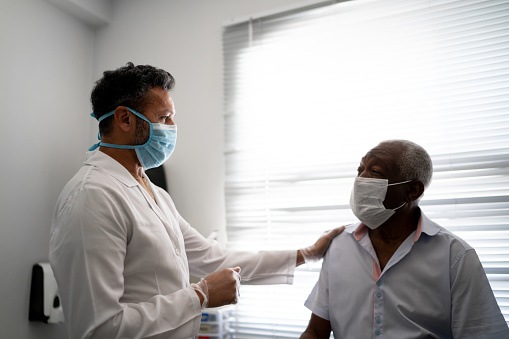
Patients with chronic lymphocytic leukemia (CLL) are at risk for secondary malignancies. However, this risk has not been examined among patients treated with novel targeted agents, which have positively impacted the prognosis of CLL. A study found that even with the introduction of targeted therapies, patients with CLL remain at risk for secondary malignancies. The results of the retrospective study were presented at the 62nd ASH Annual Meeting & Exposition.
Patients with CLL treated at a large tertiary care center from 1994 to 2018 were stratified by the treatment they received during their disease course: cytotoxic chemotherapy alone, chemoimmunotherapy, or a targeted agent (Bruton’s tyrosine kinase, phosphoinositide 3-kinase, or B-cell lymphoma 2 inhibitors).
A total of 265 patients were identified. The median age at diagnosis was 62 years (range, 28-94 years), and 107 patients (41.5%) had Rai stage 3 or 4 at diagnosis. Most patients were male (n=168; 63.4%) and white (n=199; 82.9%). Patients were followed for a median of 10.5 years.
Most patients were prescribed treatment (n=185; 70.1%), with a median time to treatment of 11 months. Thirty-three patients (17.7%) received only chemotherapy, 110 (59.1%) received chemoimmunotherapy, and 43 (23.1%) received targeted agents. Median follow-up was shorter for patients who did not receive treatment compared with those who did (8.5 years vs. 11.8 years), but among the different treatment groups, follow-up times did not largely differ. However, overall survival was better in patients who received targeted agents.
Overall, 80 patients (30.9%) developed a secondary malignancy; median time from CLL diagnosis to second malignancy diagnosis was 48 months. The five-year cumulative incidence of secondary malignancy was 19.8%, and the 10-year cumulative incidence was 29.8%. In half of patients (n=40), the secondary malignancy of earliest onset was cutaneous malignancy; additional earliest onset secondary malignancies included solid tumor in 31 patients (38.8%) and hematologic malignancy in nine patients (11.3%). In the solid tumor group, the most common cancers were lung (n=8), colon (n=5), and prostate (n=4). Of the 45 patients who developed skin cancer after their CLL diagnosis (20%), 17 were diagnosed with multiple cutaneous malignancies.
Although the cumulative incidence of secondary malignancies did not differ among the treatment groups (P=0.9), patients who received targeted agents had a higher cumulative incidence of cutaneous malignancies. Multivariate analyses observed that the only risk factor associated with secondary malignancies was age, while targeted agents affected the risk for cutaneous malignancies (hazard ratio, 3.1; 95% confidence interval, 1.37-7.07).
“As [patients with] CLL treated with targeted agents experience improved survival, surveillance for secondary malignancies, in particular cutaneous cancers, remains an important health maintenance intervention, the researchers concluded.







 © 2025 Mashup Media, LLC, a Formedics Property. All Rights Reserved.
© 2025 Mashup Media, LLC, a Formedics Property. All Rights Reserved.